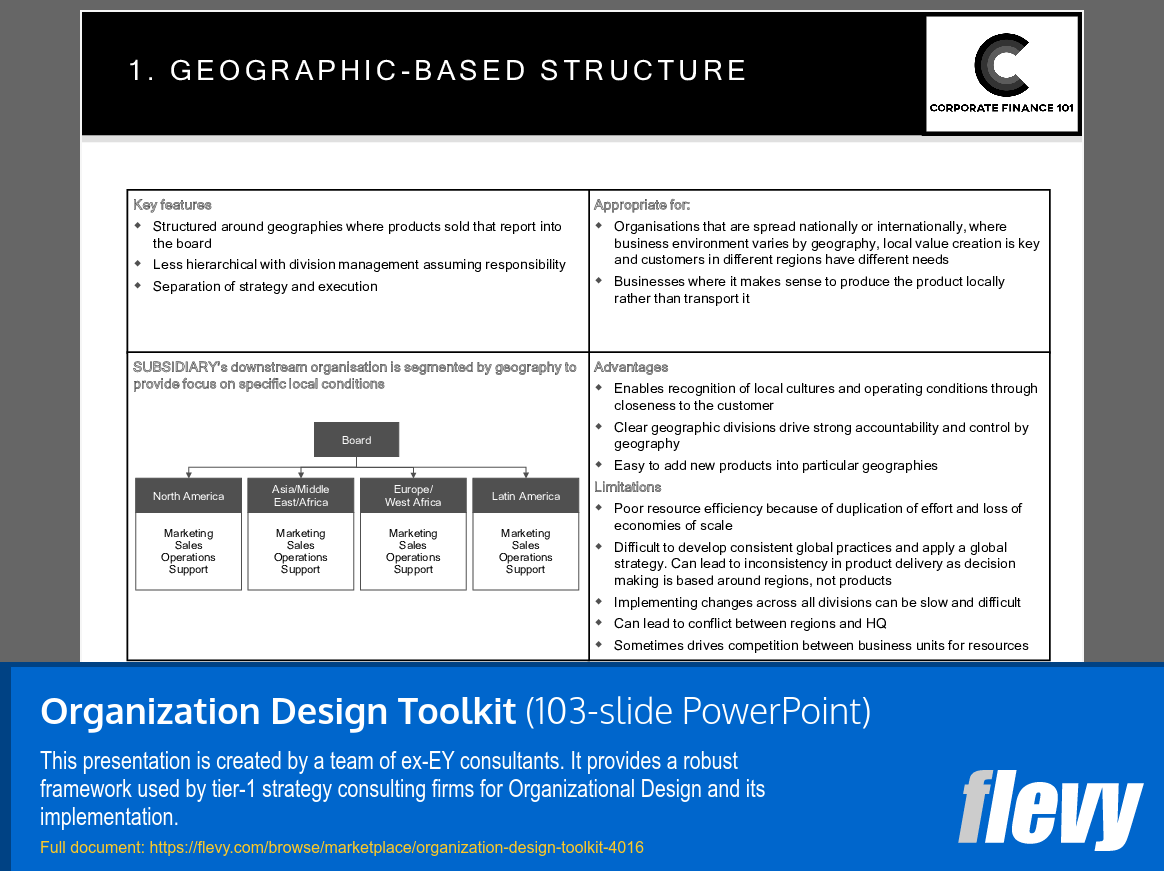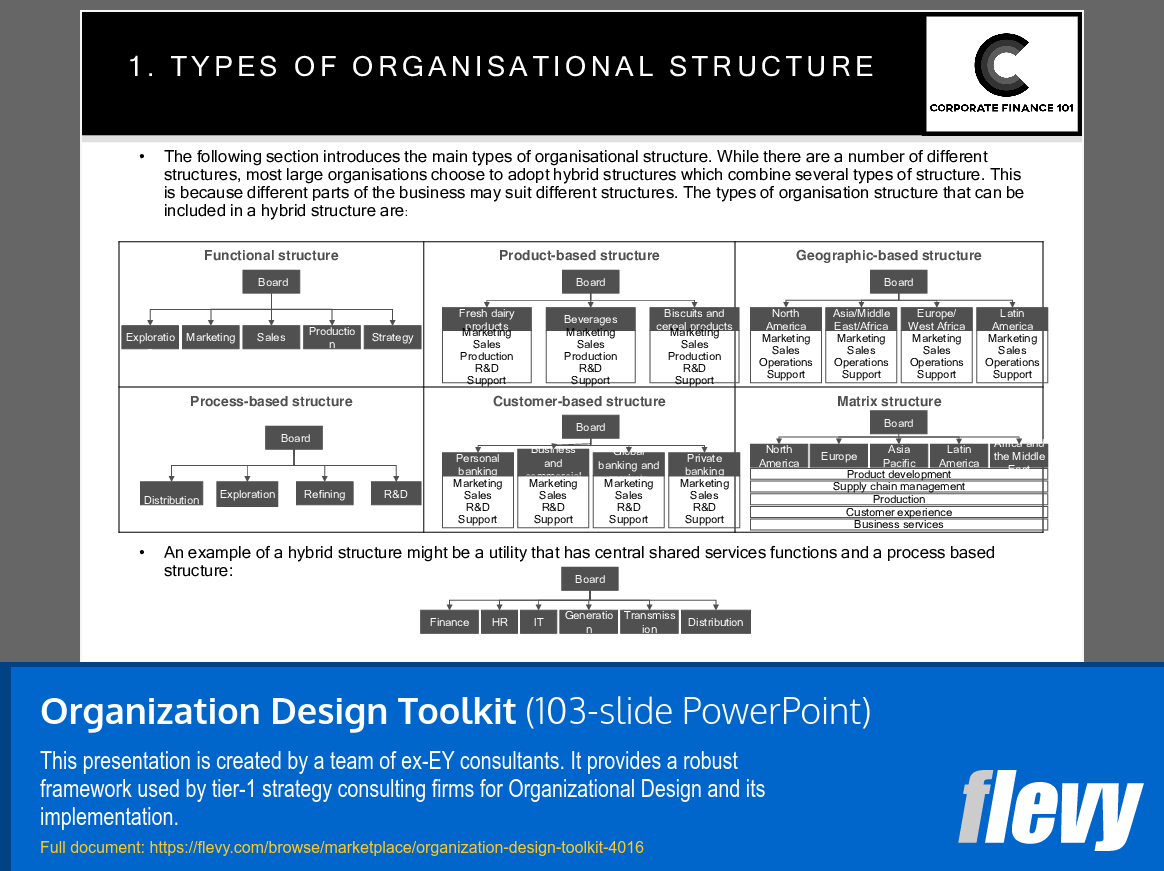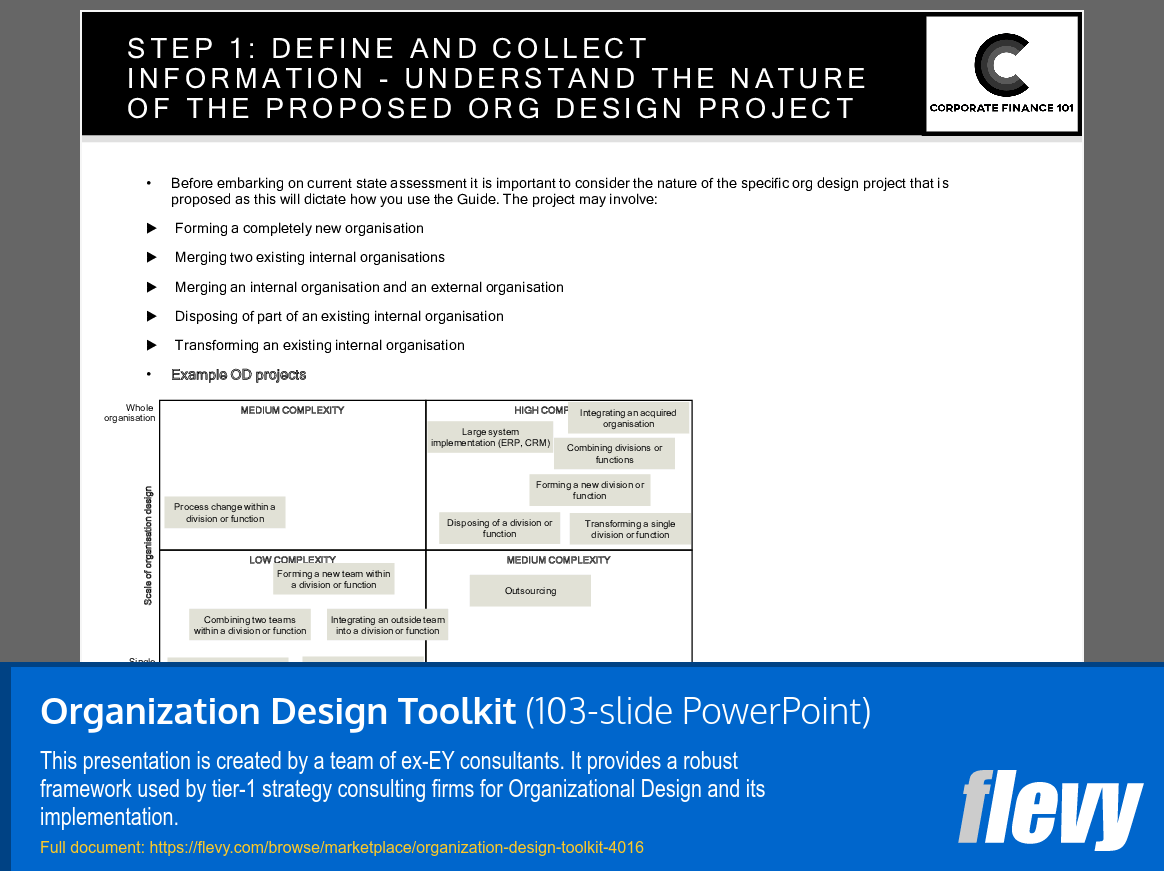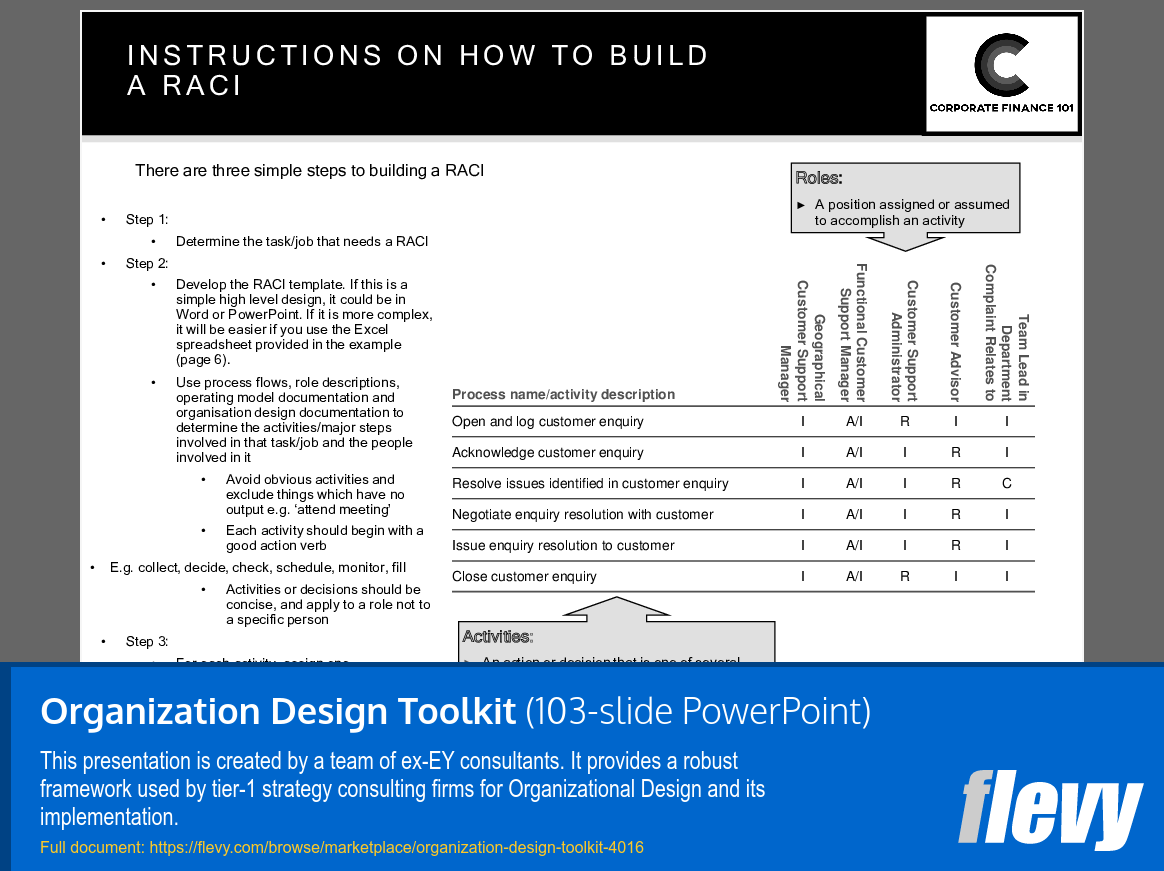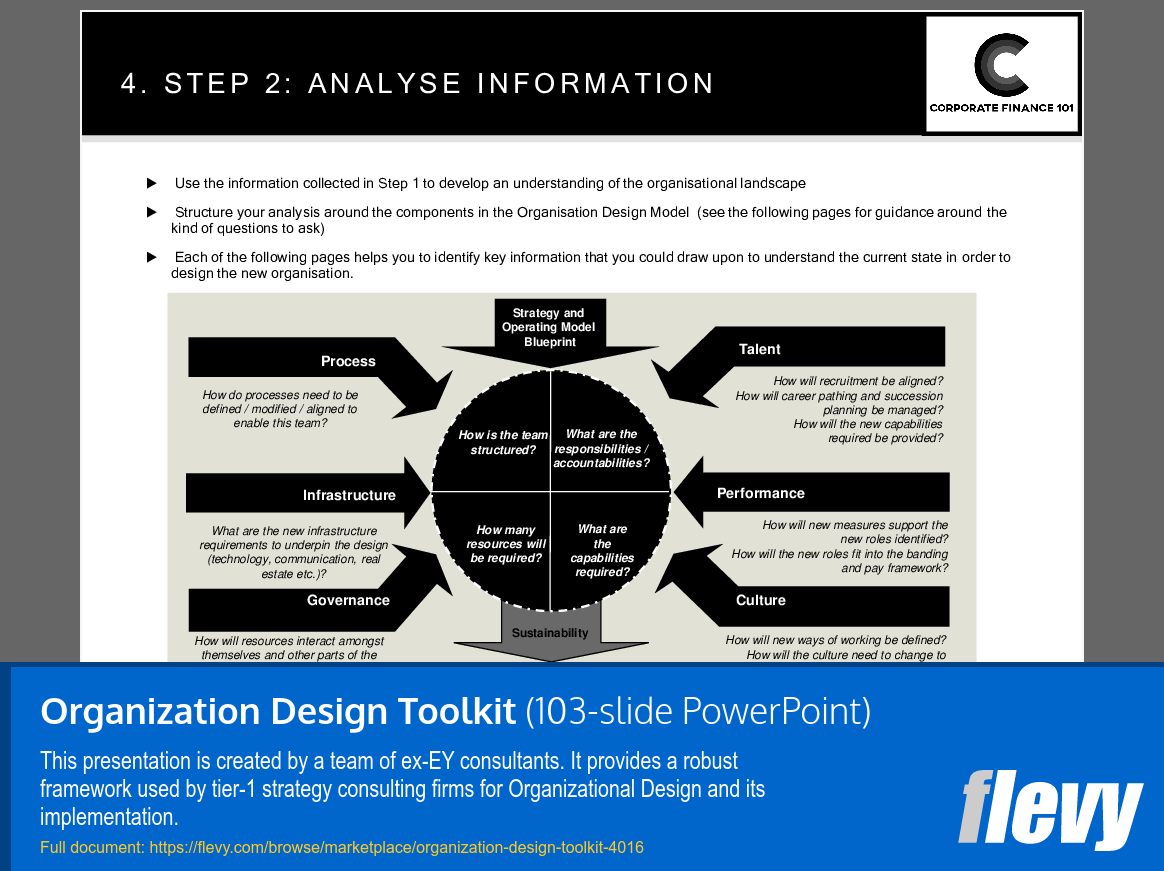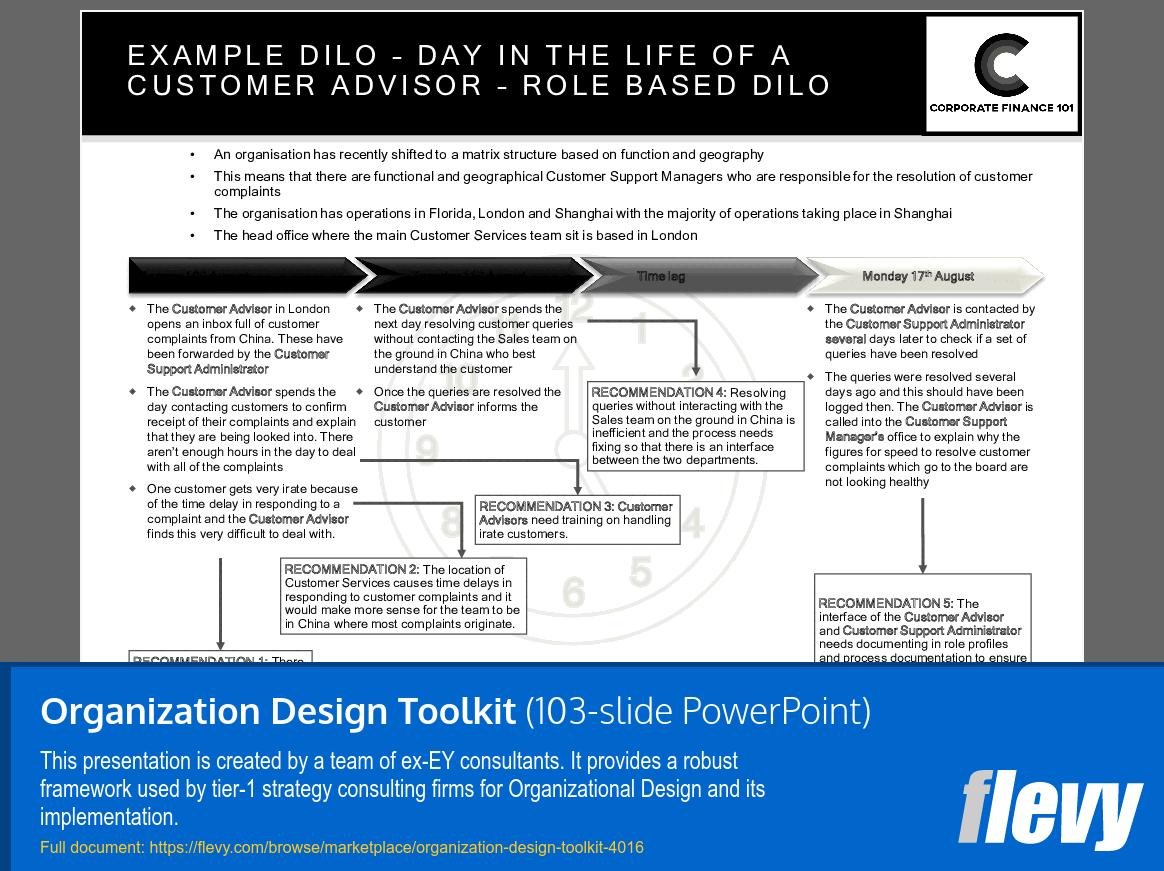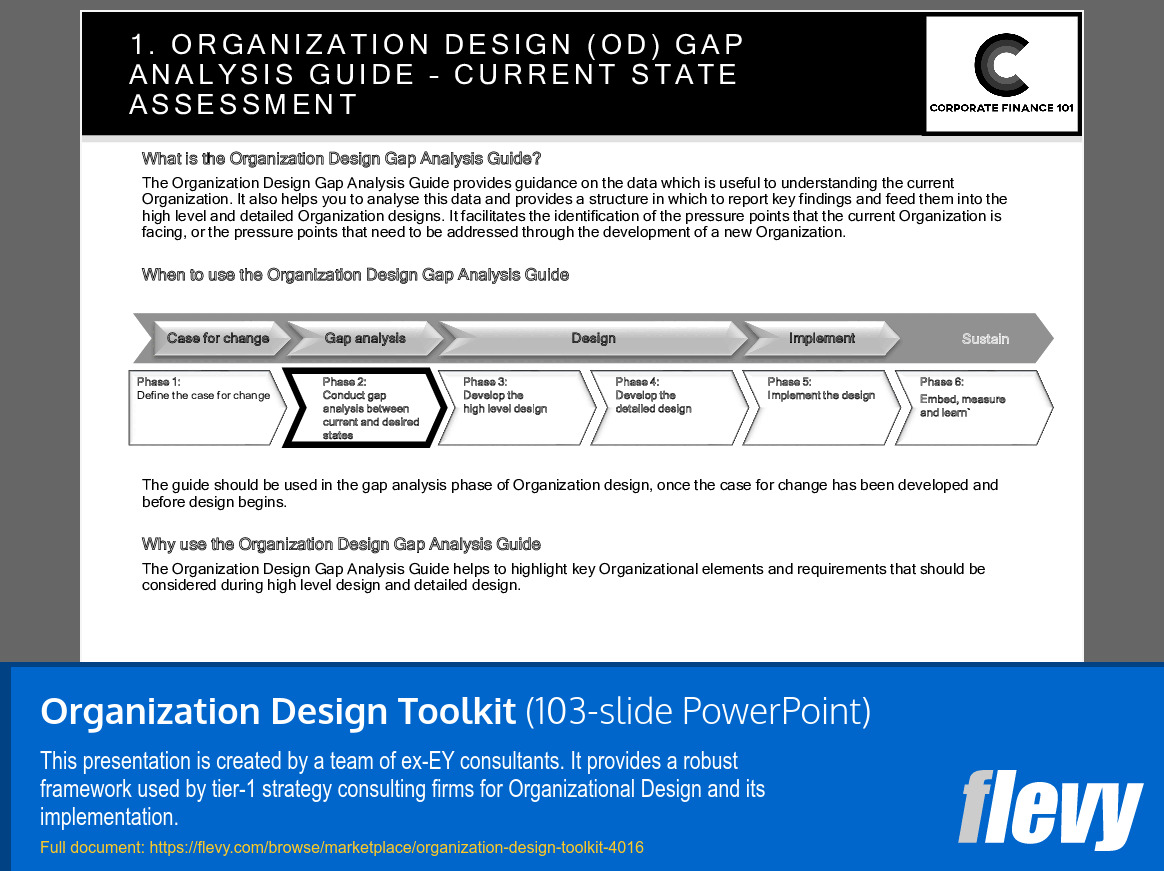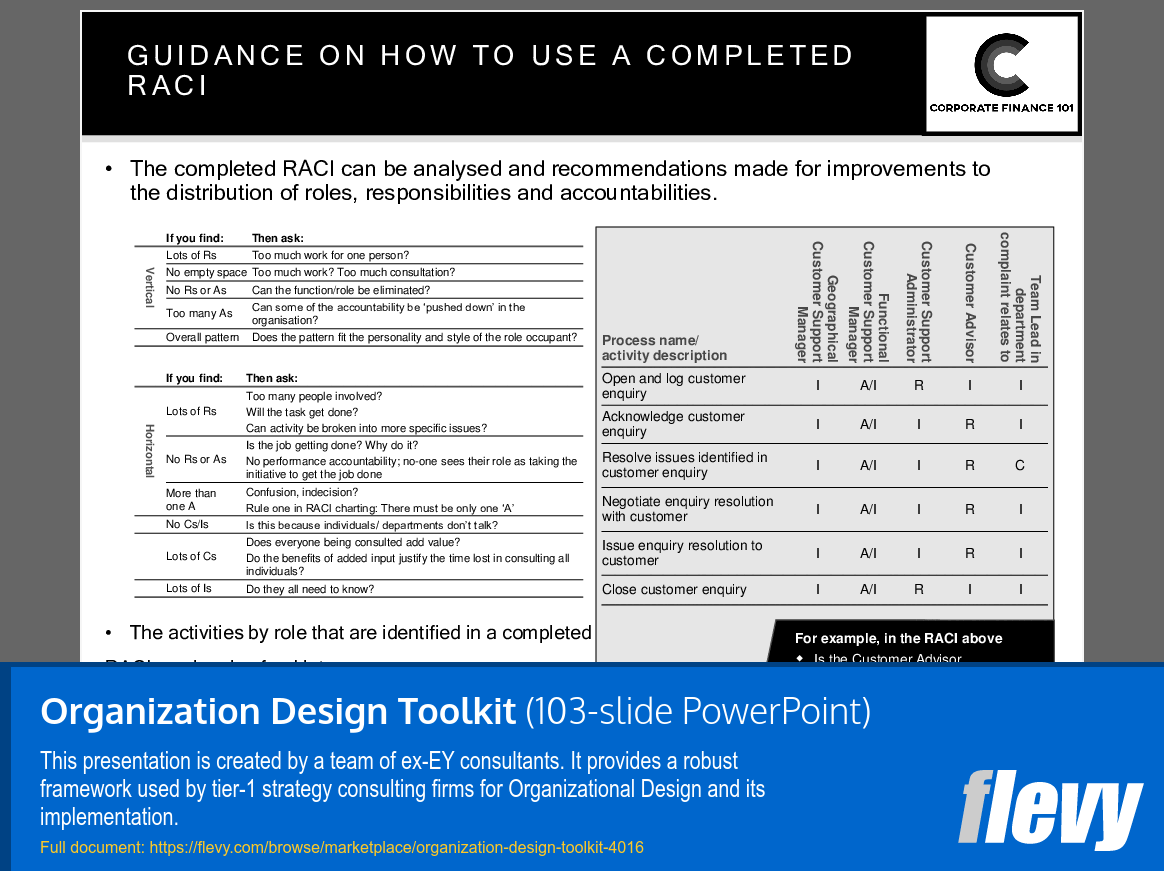Complete Organization Design Toolkit (PowerPoint PPTX Slide Deck)
PowerPoint (PPTX) + Excel (XLS) 103 Slides
BENEFITS OF THIS POWERPOINT DOCUMENT
- Provides a framework for organisational design
- Provides tools to assist with implementation of the framework
ORGANIZATIONAL DESIGN PPT DESCRIPTION
Recent McKinsey research surveyed a large set of global executives and suggests that many companies, these days, are in a nearly permanent state of organizational flux. A rise in efforts in Organizational Design is attributed to the accelerating pace of structural change generated by market disruption such as the COVID-19 pandemic for example.
However, few organizational design attempts are successful. The opportunity of a successful outcome is greatly increased through following the rigorous Organization Design process.
The purpose of this Organization Design Approach framework and associated tools is to provide a standard methodology and governance framework for Organization Design projects across a Company. The Organization Design Approach and supporting Organization Design Toolkit can be used as a guide for HR Business Partners and Line Managers on how to complete an Organization Design project. It will help to drive a consistent approach to Organization Design.
The document is a comprehensive framework for organizational design and incorporates tools to assess elements such as current organizational setup and performance, and evaluation of strategic alternatives for organizational design.
The tools are useful during the design and delivery phases of engagements when in need of the following:
1. Organization Design Model
2. Organization Design Methodology
3. Organization Design Governance Framework
4. Organization Design Core Design Principles
The Organization Design Toolkit comprises of embedded tools in the PPT such as:
1. Organization Design Gap Analysis Guide (20 page PPT)
2. Full-Time Equivalent Analysis Tool (Excel)
3. RACI Tool (6 page PPT & RACI Excel template)
4. Organizational Structure Guide (18 page PPT)
5. Design Evaluation (9 page PPT)
6. Day In the Life Of Tool (7 page PPT)
7. Role Profile Guideline (5 page Word document)
The Organization Design Toolkit includes a detailed guide on developing tailored design principles to meet specific project requirements. It also provides a comprehensive framework for evaluating and selecting organizational structures, ensuring alignment with strategic business goals.
Got a question about the product? Email us at support@flevy.com or ask the author directly by using the "Ask the Author a Question" form. If you cannot view the preview above this document description, go here to view the large preview instead.
Source: Best Practices in Organizational Design, Gap Analysis, Bain PowerPoint PowerPoint Slides: Complete Organization Design Toolkit PowerPoint (PPTX) Presentation Slide Deck, Corporate Finance 101
ORGANIZATIONAL DESIGN PPT SLIDES
Project Governance Framework by Complexity Level

This PPT slide outlines project governance requirements categorized by complexity levels: low, medium, and high. Each category is accompanied by examples and specific governance and team requirements.
For low complexity projects, such as minor team restructurings, the governance is relatively straightforward. It requires a Band B or C Project Sponsor and a nominated Project Lead. There’s no need for a formal Steering Group, as oversight is managed through existing governance committees. Key activities include progress updates to the relevant committee and documented business rationale for changes. Stage reviews must receive formal approval from the Project Sponsor.
Medium complexity projects involve transformations of larger entities, like functions or Lines of Business (LoBs). Here, a Band A or Executive Project Sponsor is necessary, along with a nominated Project Lead. A formal project office must be established, and a small Steering Group is required for oversight. The approval of a business case and associated reports to the Executive is also mandated.
High complexity projects, such as organization-wide redesigns, necessitate more robust governance structures. This includes a Band A or Executive Project Sponsor, a nominated Project Lead, and a small Steering Group reporting to the Executive. A formal program office setup is essential, and steering committee approvals are required at each phase. The project team for high complexity initiatives is extensive, including dedicated roles for project management and change management, ensuring comprehensive oversight and execution.
Overall, the slide serves as a practical guide for assessing governance needs based on project complexity, helping organizations align their resources and oversight mechanisms effectively.










